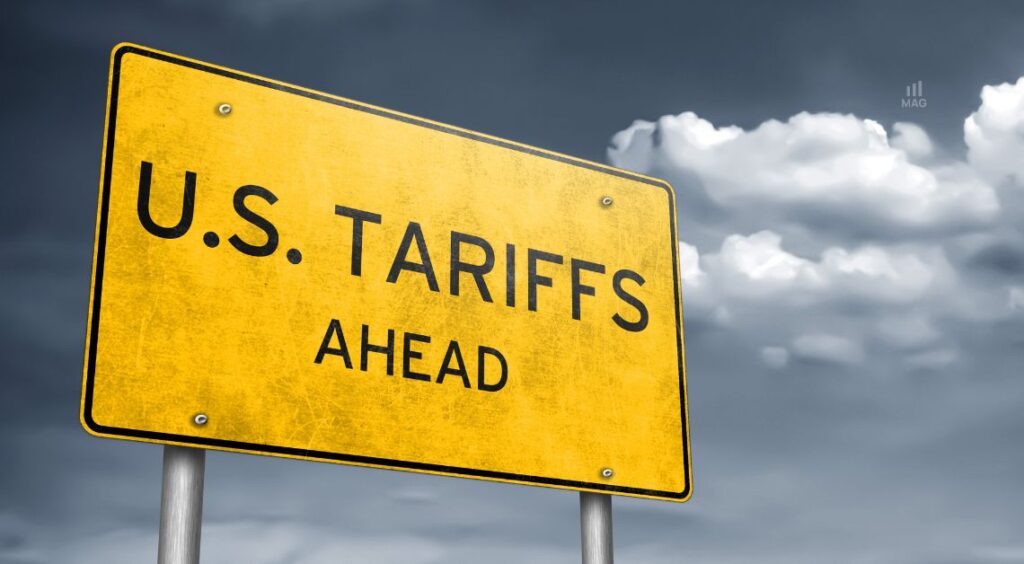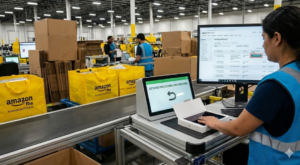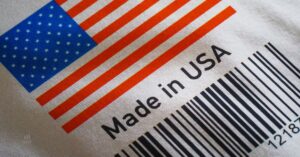
What Trump presidency means for Amazon sellers - adapting to changing trade policies, regulatory shifts, and evolving e-commerce dynamics.
Big political changes often mean big business challenges, and Amazon sellers are no exception. With president-elect Trump back in office, shifts in trade policies, regulations, and e-commerce competition are on the horizon.
But don’t panic—prepare. From rising tariffs to new fulfillment standards, these changes could shake up your operations. The key question: Will you adapt or fall behind?
This guide breaks it down, offering actionable steps to diversify suppliers, streamline delivery, and tap into fresh sales channels. Ready to thrive in the Trump era? Let’s get to work.
What Trump’s Presidency Means for Amazon Sellers: Tariffs
Amazon sellers who rely on international suppliers should brace for significant changes under Trump’s proposed tariff policies. Here’s what’s on the table and how it might impact you:
1. Universal Import Tariff (10%-20%)
A blanket tariff on all imports aims to promote domestic production but will increase costs for sellers who rely on global sourcing. Higher import costs could lead to thinner margins, making adjusting pricing or finding alternative suppliers essential.
2. Targeted Tariffs on Chinese Imports (60%)
Products sourced from China could face a hefty 60% tariff. Amazon sellers, heavily reliant on Chinese manufacturers, will need to reconsider their sourcing strategies to avoid unsustainable price hikes.
3. Tariffs on Mexico and Canada (25%)
Tariffs on imports from Mexico and Canada target broader political issues but will disrupt supply chains. Retailers sourcing from North America may see supply chain delays and increased product costs, further complicating fulfillment.
What Trump’s Presidency Means for Amazon Sellers: Impact on Business
Trump’s proposed tariffs are likely to affect Amazon sellers in several key ways:
1. Increased Product Prices
Tariffs could drive up costs for imported goods, forcing sellers to increase prices. For instance, a toaster priced at $40 might rise to $48, or a pair of athletic shoes could go from $50 to $59.
Price hikes may reduce consumer demand, affecting sales volume.
2. Supply Chain Disruptions
Sellers may need to diversify their supply chains to avoid countries facing high tariffs, which could involve shifting suppliers or sourcing from higher-cost regions. This could lead to more complex logistics, delays, and higher operational costs.
3. Profit Margin Strain
Price-sensitive consumers, especially in non-essential categories like apparel, may resist price increases. Sellers could face pressure to absorb additional costs, which would impact profit margins and overall profitability.
Other Impacts on Amazon Sellers
Antitrust Scrutiny
Amazon may face increased antitrust scrutiny, potentially leading to structural adjustments or changes in marketplace rules.
This could result in new policies affecting third-party sellers, such as adjustments to fees, visibility, or competitive dynamics.
Regulatory Changes
Labor and environmental regulations could evolve, impacting Amazon’s operations and fulfillment processes.
These changes may lower Amazon’s operational costs, leading to improved fulfillment efficiency and reduced shipping expenses for sellers.
How Trump’s Presidency Could Impact E-Commerce
The Trump presidency could bring significant changes in the Amazon marketplace and the e-commerce landscape in general:
- An e-commerce impact from the shift towards domestic products could boost U.S.-based platforms like Walmart Marketplace and direct-to-consumer channels for Amazon sellers.
- Relaxed regulations may lead Amazon and other retailers to adopt AI, automation, and drone delivery, improving efficiency and speed.
Potential Outcomes From Tightening Regulations
Increased consumer spending could boost e-commerce, especially if there’s a rise in demand for U.S.-made products.
Changes in regulations may lead to more mergers and acquisitions, with Amazon potentially acquiring companies to enhance logistics and expand its market reach, affecting sellers’ options.
More investment in emerging technologies like augmented shopping, voice commerce, and social shopping for shopping; and blockchain for supply chain transparency could give sellers new ways to stand out.
- The economy could improve under Trump’s administration, benefiting Amazon sellers, especially with lower loan interest rates, which could help new sellers.
While it is still unclear how the potential impacts of Trump’s presidency will directly affect the operations of Amazon sellers, the core strategies for growing and succeeding on Amazon will remain the same.
What Products Will Be Affected by Trump's Proposed Tariffs?
1. Groceries: Vegetables, Fruits, and Juices
Gregory Astill, Belem Avendaño Ruiz, and Steven ZahniserIn 2023, Mexico supplied 63 percent of U.S. vegetable imports and 47 percent of U.S. fruit and nut imports.
Increased tariffs on imports from Mexico, the U.S.’s largest source of fresh produce, could drive up prices on vegetables, fruits (including avocados), and frozen juices.
Affected Items: Avocados, tomatoes, beer, tequila, and many grocery staples.
2. Apparel and Electronics
Trading EconomicsUnited States Imports from China of Electrical, electronic equipment was US$126.68 Billion during 2023.
Products from China, including clothing (like T-shirts) and electronics, would face a 10% tariff increase.
Affected Items: Cotton shirts, shoes, cellphones, and household electronics.
3. Vehicles and Auto Parts
International Trade AdministrationThe United States’ share in the total Canadian automotive import market remains dominant at approximately 62%.
Trump Tariffs on products from Mexico and Canada could lead to higher prices for vehicles and car parts, affecting the U.S. automotive market.
Affected Items: Cars, engines, and auto parts.
What Trump’s Presidency Means for Amazon Sellers: Strategic Adaptation
With potential shifts in trade policies and regulations following Donald Trump’s election, Amazon sellers should take steps to adapt. Here are three key actions to prepare:
Expand Product Sources and Supply Chains
- Find alternative suppliers. Look for options outside of China, such as Southeast Asia, Latin America, or the U.S., to reduce tariff risks.
- Source locally. Working with U.S.-based suppliers can avoid tariffs and appeal to consumers who prefer American-made products.
- Adjust product catalog. Focus on less tariff-sensitive categories to protect your business from sudden policy changes.
Streamline Fulfillment and Logistics
- Improve fulfillment efficiency. FBM sellers should refine logistics to meet Amazon’s delivery standards and consider partnering with 3PLs for better efficiency.
- Ensure speed and reliability. Fast, reliable delivery is key to customer satisfaction. Work with trusted partners to manage seasonal demands.
- Track regulatory changes. Stay informed about shifts in labor and environmental regulations that may impact fulfillment costs.
Diversify Sales Channels
- Explore new platforms. Consider selling on marketplaces like Walmart or TikTok Shop to reach new audiences and reduce reliance on Amazon.
- Develop a Direct-to-Consumer (DTC) Channel. A direct sales channel gives you more control over brand experience and customer relationships.
- Use Amazon’s data tools. Leverage Amazon’s data insights to make informed decisions across all sales platforms.
Planning alone in response to the challenges of the Trump presidency could be risky for Amazon sellers. Working with professionals like an Amazon agency helps you navigate trade policy changes, stay visible in search results, and boost your click-through and conversion rates.
Experts consider multiple possibilities, guide you on diversifying suppliers, optimizing logistics, and exploring new sales channels, helping you avoid costly pitfalls. Partnering with them ensures your brand remains adaptable and continues to grow, no matter the political landscape.






